Messier 15
Click image for full size version
August 26, 2020
M15 is a globular cluster in Pegasus. It was catalogued by French comet hunter Charles Messier, but was discovered by Jean-Dominique Maraldi in 1746. This cluster contains more than a hundred thousand stars, and is about 12 billion years old. It is a paltry 33,000 light years away. This is a stone’s throw away compared to the many distant galaxies scattered throughout this shot. For example, IC 5115 is the spiral galaxy in the upper left corner. It is almost 500 million light years away. Messier 15 is one of three Milky Way globulars known to contain planetary nebulae. Pease 1 is located just above and to the right of centre of M15, but can’t be resolved in this image amid the swarms of stars in the globular cluster.
Tekkies:
Sky-Watcher Esprit 150 f/7 refractor, and QHY 16200-A camera with Optolong LRGB filters. Acquisition, focusing, and control of Paramount MX mount, unguided, with TheSkyX. Focus with Optec DirectSync motor and controller. Automation with CCDCommander. Equipment control with PrimaLuce Labs Eagle 3 Pro computer. All pre-processing and processing in PixInsight. Acquired from my SkyShed in Guelph. Average or better transparency and seeing. Data acquired June 25-July 1, 2020 in a moderately moonlit sky.
90x5m L, 36x5m R, and 22x5m G and B (Total = 11hr10m)
Image scale 1.15 arcsec per pixel
Data Reduction and Cleanup
The Weighted BatchPreProcessing script was used to perform calibration, cosmetic correction and registration of all frames. ImageIntegration was used to make the 3m-L, 10m-L, R, G and B masters. DynamicCrop was used to crop all the masters identically. DynamicBackgroundExtraction was applied to each master using Subtraction.
RGB
Creation and cleanup: The R, G and B were combined to make an RGB image which was colour balanced with ColorCalibration.
Linear Noise Reduction: MultiscaleLinearTransform was used to reduce noise in the RGB image. Layer settings for threshold and strength: Layer 1: 4.0 0.8 Layer 2: 3, 0.7 Layer 3: 2., 0.6 Layer 4: 1.0, 0.2.
Stretching: HistogramTransformation was applied to make a pleasing, bright image, with background set to an intensity of approximately 0.10.
SuperLuminance
HDR Luminance: The 3m and 10m luminance masters were combined with HDRComposition.
SuperLuminance: A synthetic luminance was made by combining the HDR luminance, R, G and B masters (weighted average in ImageIntegration).
Deconvolution: A star mask was made from the SuperL master to use as a Local Deringing Support Image. A copy of the image was stretched to use as a range mask. Deconvolution was applied (100 iterations, regularized Richardson-Lucy, external PSF made using the PSFImage script; Global dark deringing = 0.04).
Linear Noise Reduction: MultiscaleLinearTransform was used to reduce noise in the background areas, using an internal mask to protect bright structures. Layer settings for threshold and strength: Layer 1: 3.0 0.8 Layer 2: 2.0, 0.6 Layer 3: 1.0, 0.3
Stretching: HistogramTransformation was applied to make a pleasing, bright image, with background set to an intensity of approximately 0.10.
Combining SuperLuminance and RGB
LRGB Combination: The SuperL was applied to the RGB image using LRGBCombine with default settings.
Additional Processing
Nonlinear Noise Reduction: TGVDenoise was used in L*a*b* mode to reduce noise with a mask used to mainly target the background areas and protect the stars (max. 1000 iterations and convergence selected for both lightness and chrominance).
Compression of Core: HDRMultiscaleTransform was applied twice, with scales of 6 and 4, to a clone of the image using a mask to select just the core of the globular cluster. The clone was then blended back into the original 1:1 through the same mask, using PixelMath.
Final Steps: Background, cluster core and halo, and field star brightness, contrast and saturation were adjusted in several iterations using CurvesTransformation with masks as required. A contour mask made with StarMask was used with ColorSaturation to reduce the red halos around larger stars. ICCProfileTransformation (sRGB IEC61966-2.1; Relative Colorimetric with black point compensation) was applied prior to saving in jpg format.

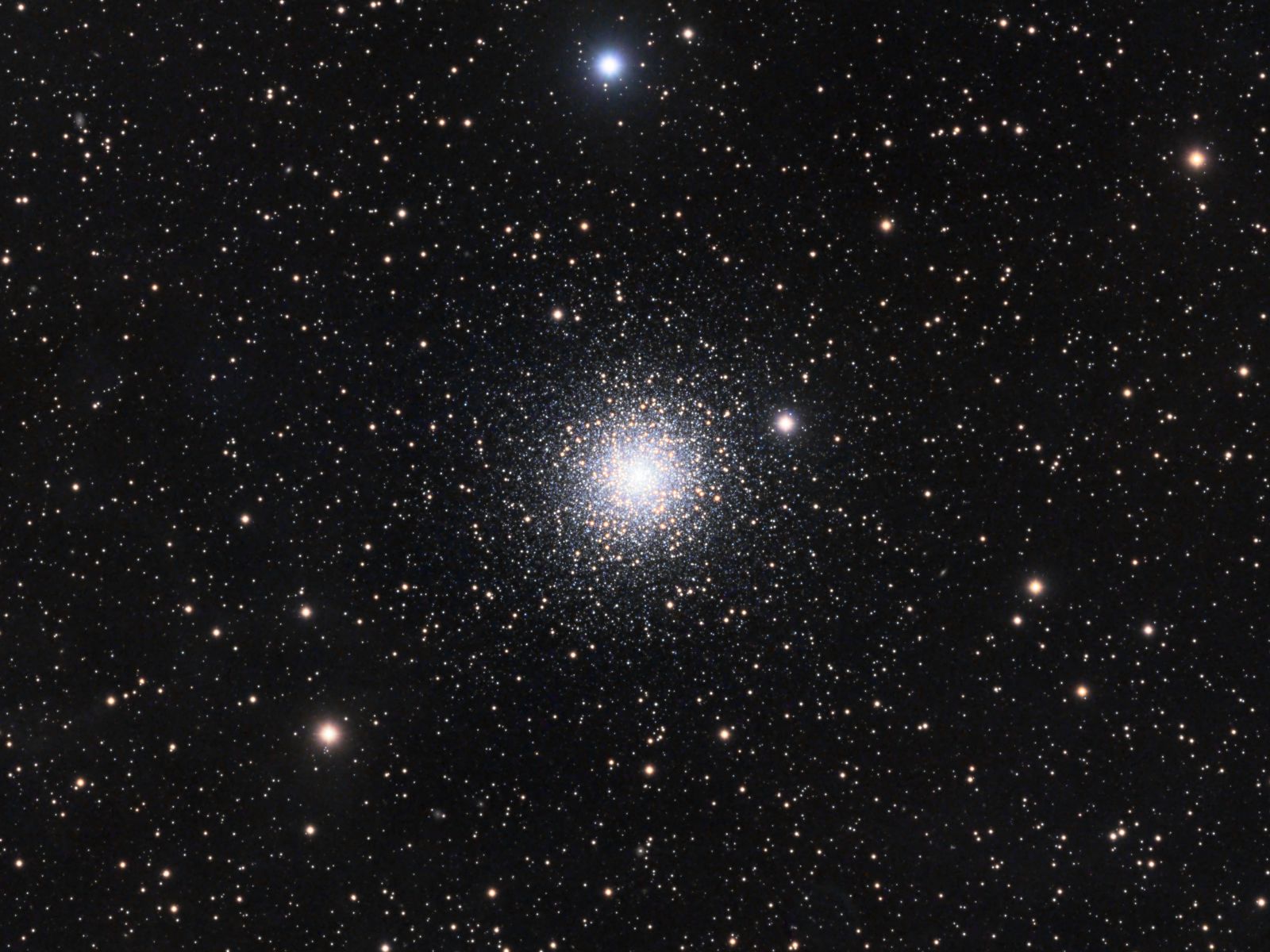
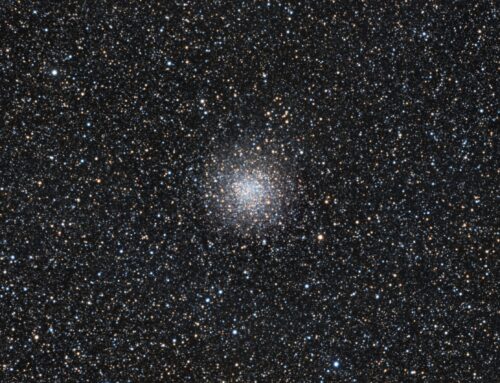
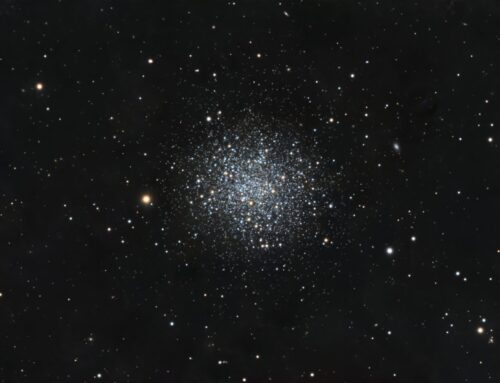
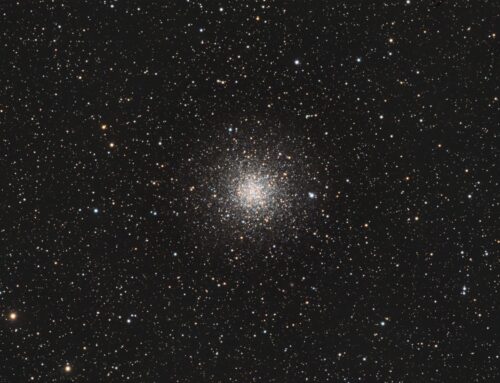
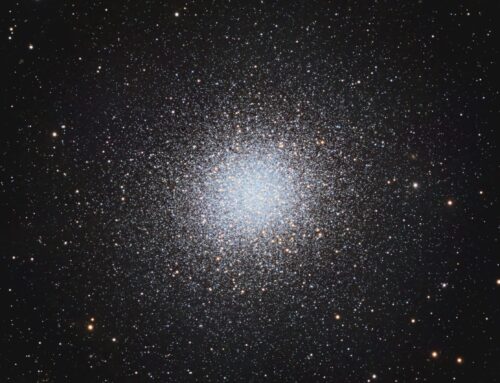
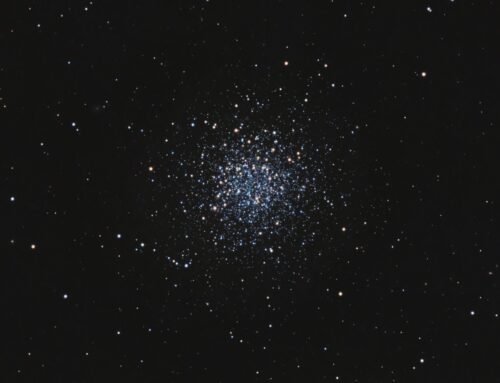
Leave A Comment